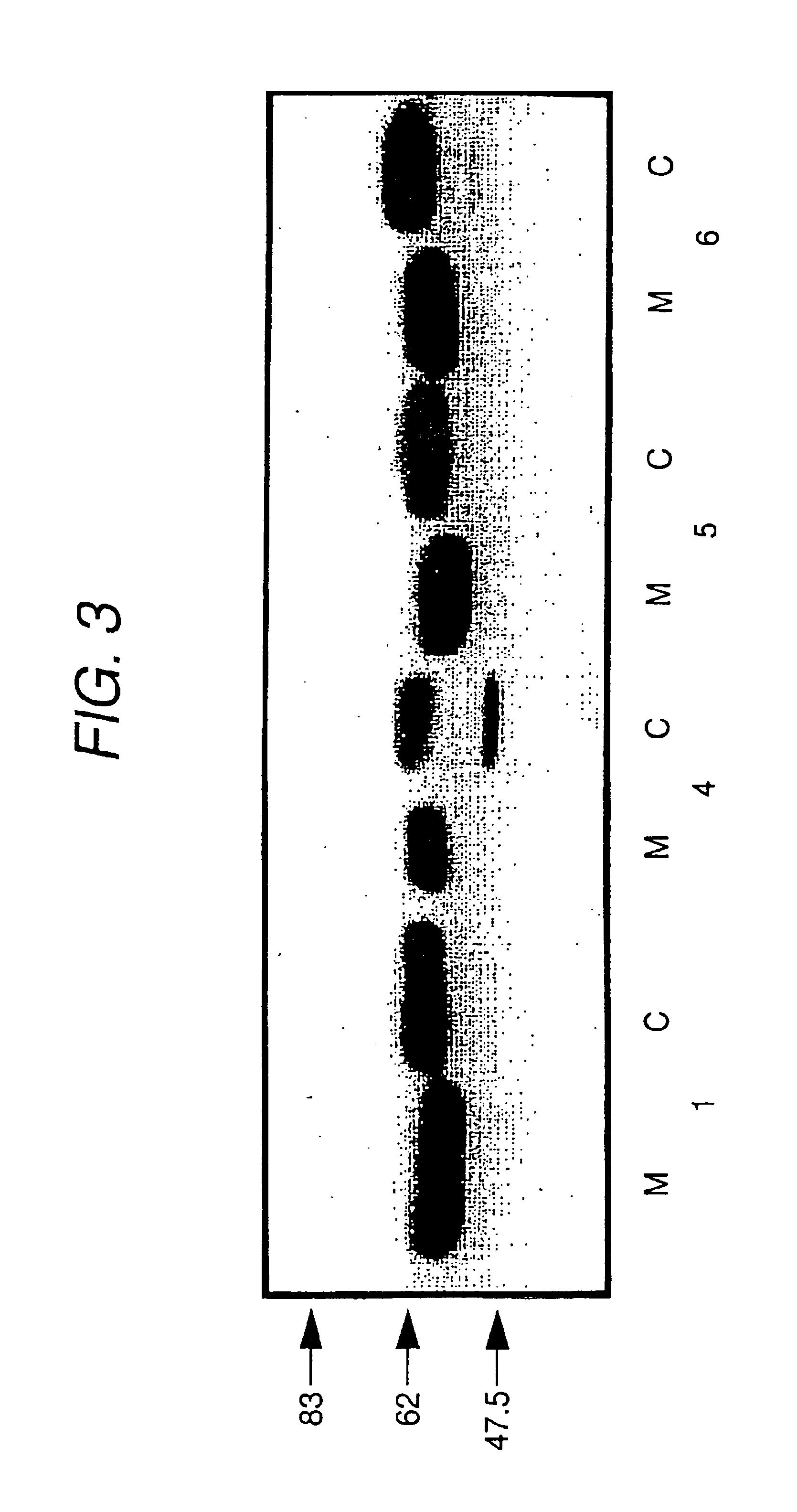Secretory thyroid stimulating hormone receptor, and method for assaying anti-thyroid stimulating hormone receptor antibody using the same
a thyroid stimulating hormone and antibody technology, applied in the field of secretory thyroid stimulating hormone receptors and methods for assaying anti-thyroid stimulating hormone receptor antibodies, can solve the problems of -human tshr, difficult to prepare porcine thyroid gland membrane fraction used as tshr sources at a large amount, and the results of assays that do not correctly reflect human tshr binding
- Summary
- Abstract
- Description
- Claims
- Application Information
AI Technical Summary
Benefits of technology
Problems solved by technology
Method used
Image
Examples
example 1
Isolation of sTSHR Gene:
[0071]A series of genetic recombination techniques in the examples were carried out with reference to the methods of Maniatis et al. (Molecular Cloning, Cold Harbor Laboratory, 1982).
[0072]Firstly, mRNA was isolated from human thyroid gland cells (excised thyroid gland tissue) by the guanidinium thiocyanate-phenol-chloroform extraction method. In this case, poly(A)+ RNA was prepared using oligo(dT) cellulose (Collaborative Research Inc., Type 2).
[0073]Human thyroid gland cell cDNA was synthesized by adding 5 μg of poly(A)+ RNA to a reaction solution containing a reverse transcriptase derived from moloney murine leukemia virus (GIBCO-BRL, 300 units), an RNase inhibitor derived from human placenta (manufactured by Wako Pure Chemical Industries, 15 units) and a random primer composed of 6 bases (0.5 μg), and carrying out the reaction at 37° C. for 60 minutes.
example 2
Construction of a Transfer Vector Inserted with sTSHR cDNA Encoding Amino Acid Residues of the N-Terminus to the 410th of Natural TSHR:
[0074]The cDNA encoding an extracellular domain moiety of TSHR (410 amino acid residue moiety of the 1st to the 410th from the N-terminus) was amplified by PCR using the human thyroid gland cell cDNA as the template. A sense primer shTSHR-1 (SEQ ID NO: 1) in which an EcoRI recognition sequence (the 4th guanine to the 9th cytosine from the 5′ end in SEQ ID NO: 1) and a three base Kozak sequence (the 10th adenine to the 12th cytosine from the 5′ end in SEQ ID NO: 1) were fused to the 5′ end of an oligonucleotide of 17 bases from the initiation codon of TSHR and an antisense primer ahTSHR-1 (SEQ ID NO: 2) in which an EcoRV recognition sequence (the 4th guanine to the 9th cytosine from the 5′ end in SEQ ID NO: 2) was fused to the 5′ end of an oligonucleotide which is complementary to the sequence moiety composed of 24 upstream bases from the codon corres...
example 3
[0078]Preparation of a Transfer Vector Introduced with cDNA Encoding sTSHR Corresponding to the Amino Acid Residues of from the N-Terminus to the 410th of Natural TSHR, in which all of the Amino Acid Residues of the 352nd to the 356th from the N-Terminus are Substituted with Alanine:
[0079]Using the human thyroid gland cell cDNA obtained in Example 1 as the starting material, a transfer vector inserted with cDNA encoding sTSHR in which the amino acid residues of the 352nd to the 356th from the N-terminus of natural TSHR were substituted with alanine was prepared.
[0080]By employing the overlap elongation method (GENE, 77: 51-59 (1989)), cDNA encoding the receptor in which an amino acid residue moiety having high hydrophobicity (the 352nd to the 356th from the N-terminus) existing in the C-terminus of the extracellular domain moiety was substituted with alanine was prepared. Firstly, a sense primer shTSHR-2 (SEQ ID NO: 6) in which a DNA fragment encoding five alanine residues (16 bases...
PUM
| Property | Measurement | Unit |
|---|---|---|
| concentration | aaaaa | aaaaa |
| concentration | aaaaa | aaaaa |
| concentration | aaaaa | aaaaa |
Abstract
Description
Claims
Application Information
 Login to View More
Login to View More - R&D
- Intellectual Property
- Life Sciences
- Materials
- Tech Scout
- Unparalleled Data Quality
- Higher Quality Content
- 60% Fewer Hallucinations
Browse by: Latest US Patents, China's latest patents, Technical Efficacy Thesaurus, Application Domain, Technology Topic, Popular Technical Reports.
© 2025 PatSnap. All rights reserved.Legal|Privacy policy|Modern Slavery Act Transparency Statement|Sitemap|About US| Contact US: help@patsnap.com



